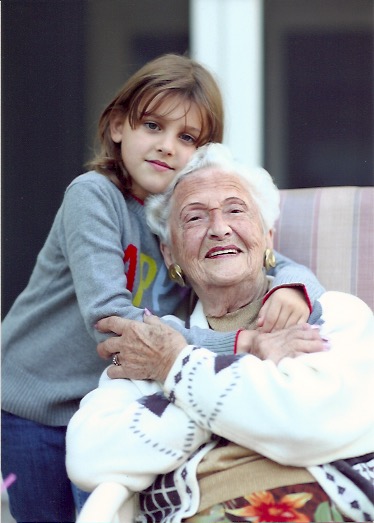
We met over the Red Maple Leaf. Or, I guess it was actually under it. We had only been her neighbours for a while, when she looked up at the Canadian flag hanging at my front door and took exception to it.
“You’d better take that down,” she said sternly. “It’s against the law for the national emblem to be that tattered.”
Originally resentful that my neighbour should call me out on the physical condition of my flag, I soon learned that my neighbour – Rodine Doris Mary Buckley-Beevers Egan – had every right to demand that I replace the flag. Not just to ensure that I wasn’t charged by the Government of Canada or the Queen herself for disgracing a national symbol, Ronnie felt personally obliged to fix such things. Indeed, I sensed it wasn’t only her nature, but her occupation.
One occupation, along with her husband Willis Egan, had been to raise four children; however, I’ve learned over the years that Ronnie had several additional occupations with equal importance and authority.
In charge of the Women’s Royal Canadian Naval Service barracks in Halifax, during the Second World War, Chief Petty Officer Rodine Egan ensured that all WRENS did their wartime jobs efficiently and that they were tucked safely into their HMCS Stadacona barracks every night by curfew. She ran, as the Navy liked to say, a tight ship. Additionally, Ronnie took great pride running her female charges through routine marching drills.
“I even drilled the men,” she told me. “Putting the men through their paces on the parade square. I really enjoyed that.”
But as mischievous as her demeanour on the parade square might have seemed, Ronnie would neither be trifled with on duty nor on the streets of Halifax. Once during the war, while walking through downtown, she came upon a junk dealer whipping a horse that had collapsed on the street. The horse’s ribs were protruding, the animal clearly in distress. In uniform, Ronnie intervened, pushing the man aside and placing her foot gently on the horse’s neck.
“This horse will be shot or it will be attended to properly,” she told bystanders. Finally, Ronnie said, a police officer arrived to put the horse down and only then was it taken away.

After the war, when she and husband Willis Egan settled in his hometown, Uxbridge, Ronnie not only raised four children, she worked in the offices of Dr. Russ St. John. I hear she ran a pretty tight ship there too, ensuring that everyone and everything performed appropriately. We learned this week, when Ronnie went into hospital for treatment of a heart condition, that like her wartime commitments, she never shied from frontline duty at the doctor’s office either. Brian Evans explained, as a boy in the midst of a snowball fight, that he’d fallen on some broken glass; so with no doctor available, Ronnie took it upon herself to stitch up Brian’s cut hand.
Whether suturing a gashed hand or responding to the needs of her community, Ronnie Egan has never shied from service. She gave time and expertise to the Uxbridge Cottage Hospital Auxiliary (in 1999 recognized by Ontario as a life member in the Hospital Auxiliaries Association); to Community Care of Durham Region (in 2007 recognized for 20 years service); to the Royal Canadian Legion (in 2010 acknowledged for lifetime of service); to time given at the Uxbridge Baptist Church. Appropriately, in 2012, she received the Queen Elizabeth II’s Diamond Jubilee Medal.
“Without volunteers,” she told me the day they pinned the medal on her blazer, “where would we be?”

In November, Ronnie accepted my invitation to participate in our annual Remembrance Day observance at Centennial College. That Wednesday morning, I drove her to the event during which I would interview her and two other veterans in front of students, faculty and staff about wartime memories. As she has for 70 years, Rodine Egan, former Chief Petty Officer at HMCS Stadacona in Halifax, had donned her beret and navy blue jacket proudly displaying her Queen Elizabeth medal.
“How do I look?” she asked.
“Like the Queen herself,” I retorted. And I meant it. I had seen Ronnie in veterans’ parades, at Legion banquets, at her town-wide 90th birthday party, and a thousand times on her living room couch or sunning herself at her back stoop. She was always appropriately dressed – casually or formally – always comfortable in her skin. To me, the most attractive thing she wore was her smile. It was genuine, yes, even regal.
Tuesday morning, when I visited Ronnie in the hospital, her granddaughter Heather told me that Ronnie had wakened, almost with military precision, shortly after daybreak.
“Is it sunny today?” she asked Heather.
“Yes,” said Heather, opening the curtains so Ronnie could see. “Sunny day with a bright blue sky.”
“And is my flag there?” Ronnie asked. Heather nodded. The Red Maple Leaf in perfect condition flapped crisply outside her window.
“Good,” Ronnie said with a peaceful resolve in her voice. “Now I can go.”
You have truly captured the person Ronnie Egan.
She was a good friend and great neighbour for 47 years.
We will truly miss her.
Thank you for this moving tribute to Ronnie
She will be missed by all who knew her.
Your memories of her at her Celebration of Life service gave us a great insight into what a wonderful neighbour and friend you had .
We too have our own special memories of her as well.